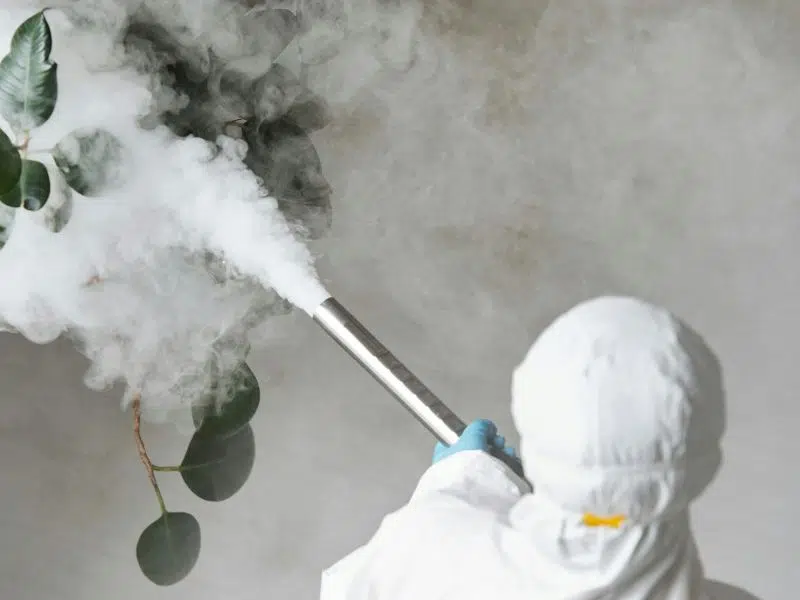
If you’re dealing with a stubborn pest problem in your home or business, fumigation is often the most effective way to eliminate infestations that standard methods can’t handle. Whether you’re battling termites, bed bugs, or other pervasive pests, understanding the pest fumigation process can help reduce anxiety and ensure a smoother experience from start to finish.
This guide covers what to expect during pest fumigation, how to prepare beforehand, and the necessary precautions to take afterward to keep your space safe and pest-free.
Understanding the Pest Fumigation Process
Fumigation is a thorough pest control method that involves sealing off a structure and filling it with fumigants—gaseous pesticides that penetrate deep into walls, floors, and hidden areas where pests hide. It’s commonly used for eliminating dry wood termites, bed bugs, and other insects that are hard to reach with surface-level treatments.
The key steps include:
- Preparation and Tent Installation: The building is sealed using a tarp or tent to contain the fumigant.
- Gas Release: The fumigant is pumped in and allowed to circulate for a prescribed time to ensure full extermination.
- Aeration: After treatment, the space is ventilated thoroughly to remove all chemical traces.
- Re-entry Approval: Technicians test air quality before giving the all-clear for residents to return.
The entire process typically takes 2 to 3 days, depending on the size of the building and the severity of the infestation.
Preparing for Pest Fumigation
One of the most important parts of the fumigation process is preparing for pest fumigation. Proper preparation protects your belongings, pets, and food while ensuring effective treatment.
Here’s a checklist of what you need to do before the fumigation begins:
1. Vacate the Property
All people, pets (including fish), and plants must leave the premises. Make arrangements for temporary accommodations, typically for at least 48 to 72 hours.
2. Secure Food and Medications
All consumables not sealed in airtight glass or metal containers must be removed or double-bagged using special fumigation bags provided by your service provider.
3. Unplug Electronics
Unplug all electrical appliances to minimize the risk of any issues during the process.
4. Open Doors Between Rooms
This helps ensure that the gas circulates evenly throughout the entire structure.
5. Remove or Protect Valuables
Though fumigation doesn’t usually damage property, it’s a good idea to store or lock away valuable items for peace of mind.
For expert help with preparation and execution, consider hiring professional fumigation services that understand local regulations and safety protocols.
What to Expect During Pest Fumigation
Once your property is prepped and sealed, the actual fumigation process begins. Here’s what to expect during pest fumigation day by day:
Day 1: Tent Setup and Fumigant Release
- Technicians will place tarps over the building to completely seal it.
- Warning signs are posted around the property.
- The fumigant is then released into the space in a controlled and monitored manner.
- The site is secured and undisturbed for a specific period (usually 24–48 hours).
Day 2: Exposure Period
- The fumigant works inside the sealed space, reaching pests in inaccessible areas.
- You’ll still be required to stay away from the property.
Day 3: Aeration and Clearance
- The tent is removed, and the property is ventilated using industrial fans.
- Licensed professionals test air quality using specialized equipment to ensure it’s safe for re-entry.
- Only after clearance is issued can you return to the premises.
Throughout the process, licensed professionals manage everything to ensure compliance with safety standards. When working with trusted providers like those offering pest control in Pinellas County, you can rest assured your property is in good hands.
After Fumigation Precautions
While fumigation is effective, your role isn’t over once you return home. You should take several after-fumigation precautions to maintain safety and avoid future infestations.
1. Open Windows and Ventilate Further
Even though professionals air out the home, keeping windows open for a few hours after re-entering is a good idea to promote air circulation.
2. Wipe Surfaces
Lightly wipe down food prep areas like kitchen counters, dining tables, and bathroom vanities with soap and water, especially if they weren’t covered during the process.
3. Discard Any Exposed Items
If you accidentally leave out food, medicine, or pet supplies, discard them to avoid potential contamination.
4. Inspect for Residual Pests
Although fumigation is highly effective, it doesn’t prevent future pest problems. You should schedule follow-up inspections or consider integrating routine pest control services into your home maintenance plan.
How to Prevent Reinfestation After Fumigation
Now that your property is pest-free, take proactive steps to keep it that way:
- Seal cracks and gaps in walls, doors, and windows.
- Keep your home dry, as moisture attracts pests like termites and cockroaches.
- Store food properly in airtight containers.
- Trim trees and shrubs near your home to reduce easy access for pests.
- Schedule regular inspections with your local pest experts to catch early signs of re-infestation.
If you live in Florida and are looking for reliable long-term pest solutions, pest control in Pinellas County offers ongoing services tailored to the specific challenges of our local environment.
Final Thoughts
Pest fumigation can feel intimidating, but understanding each step can ease your concerns and help you prepare effectively. From knowing what to expect during pest fumigation to taking the right precautions after fumigation, being informed ensures your home remains safe and pest-free.
Whether you’re dealing with termites, roaches, or bed bugs, professional fumigation services provide a deep clean sweep of your property, offering lasting results when standard treatments fall short. Combined with ongoing pest control in Pinellas County, fumigation can be a powerful part of your pest management plan.
Remember: Clean homes aren’t always pest-free, but well-informed homeowners always have the upper hand.
